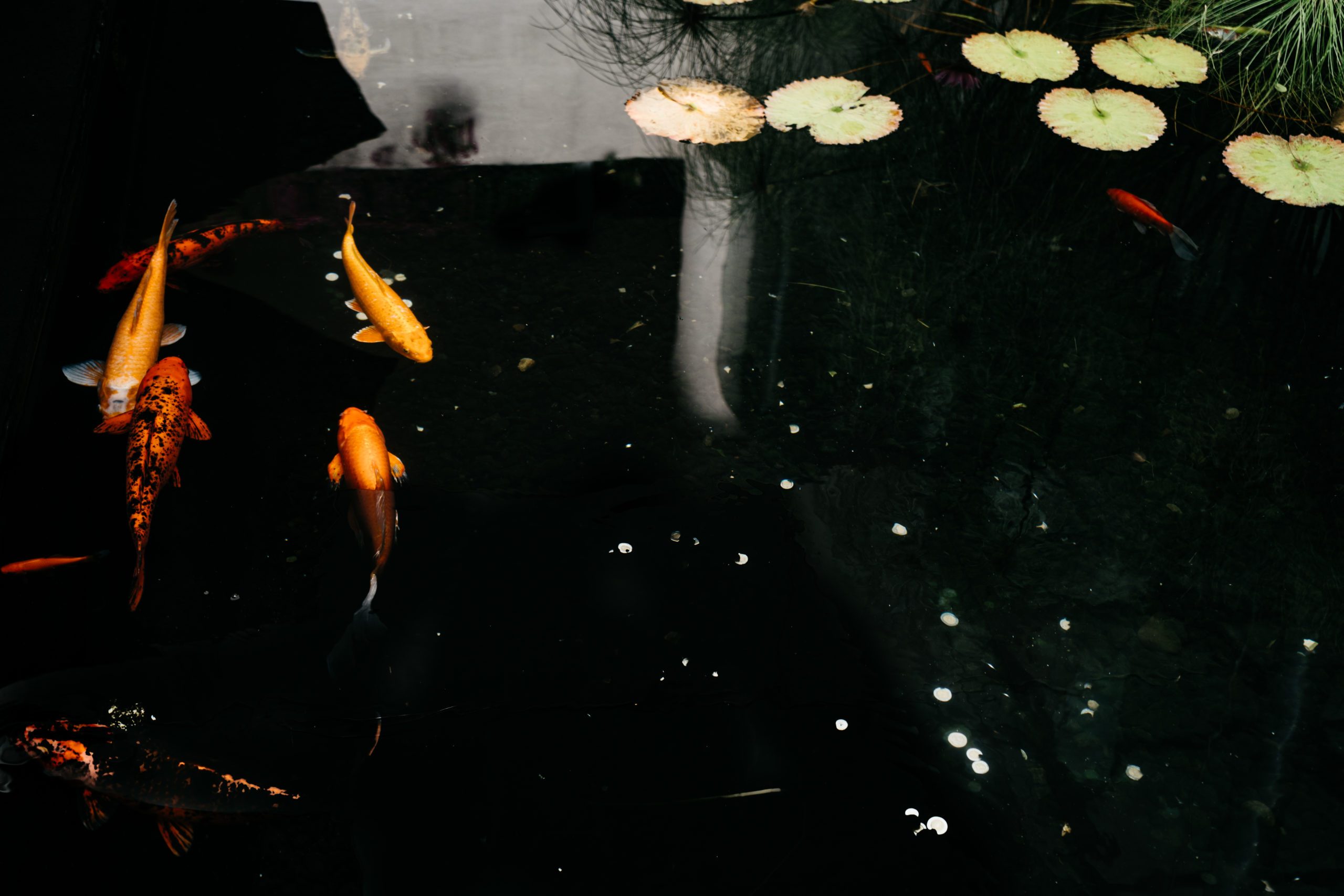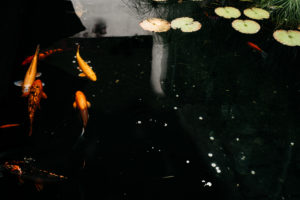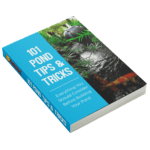
Alright! Your new pond is up and running. You checked for leaks. None  apparent. Your new pond pump is chucking along, water is running through your filter and the UV is sending algae to spore the way of the Do-Do. Now all you have to do is add some fish.
apparent. Your new pond pump is chucking along, water is running through your filter and the UV is sending algae to spore the way of the Do-Do. Now all you have to do is add some fish.
How Soon Can You Put Fish In A New Pond?
Whoa! Hold it right there partner! This is a critical point in the next phase of your pond. What you do next might spell absolute success or just as easily spell D-I-S-A-S-T-E-R. Yep, disaster. You want to add a bunch of fish, but I will tell you right now, you need to be patient.
Let’s walk through the needs of your pond right now. Yes, you have a pond filter in place, but what is it doing? For the moment, pretty much nothing but passing water back into your pond. It’s missing one essential thing. Bacteria. Your filter needs a bacteria colony that will break down the fish waste.
Start a Bacteria Colony In Your Pond
Ok, so how do you get a bacteria colony in your pond? Some people say that you can add water from another pond into your pond as sort of a starter bacteria colony. This is a bad idea for a couple of reasons.
Why Is Adding Water To Your Pond From Another Pond A Bad Idea?
First, the bacteria that might be in the water you collected are not likely to survive the trip to your pond. They are fragile to a certain extent. Essentially, what you end up dumping into your water could be nothing more than someone else’s dirty water. Speaking of dirty water, what if that friend of yours does not know the water has some sort of parasite in it?
You read that correctly! Now you have effectively transferred that parasite to your water where it will wait for your fish. With as many nasty Koi diseases and parasites out there today, transferring water like that is just not safe.
The best way to create a bacteria colony is to start small. Get one fish. Let that fish eat and produce waste in a quantity that the bacteria can actually handle. The bacteria colony will grow pretty quickly, but at this early stage, you do not want to overload it.
Test The Water Chemistry In Your Pond
You will want to start with one fish. At that point, you will want to keep a log of when the fish was added and head out to the local pond shop and get yourself a good water test kit. The kit should include at least the following:
- Ammonia Test
- Nitrite Test
- Nitrate Test
- Ph Test
The first thing that will start to be affected in your pond will be the ammonia content of the water. Ammonia is produced after the fish eats as well as when the fish exhales. If the Ammonia levels grow too large, the fish can be poisoned and ultimately die. So test the water regularly for the next week and log your results in your logbook.
Monitor Ammonia Levels In Your Pond
You will notice the level of ammonia increase during this time. Your job will be to keep this level as close to zero as possible. However, because you are also trying to build a bacteria colony, this may not be an easy task. If you do water changes during this time, keep them minimal to not flush too much bacteria away too.
You can use an ammonia blocker for the time being. The ammonia blockers serve to encapsulate the ammonia molecules so that they are less effective against the fish. They usually do not hinder the bacteria growing process though.
What you are going to notice over time will be the ammonia spike dropping and eventually reading zero. Typically what will happen next is the nitrite levels will rise at this point. This is because new bacteria will emerge and start eating the waste produced by the bacteria that ate the ammonia.
You will also notice algae spikes as well. Do not worry about these because as the pond cycles, the algae will go away as well. After the pond has gone through a complete cycle and all levels (except Ph) read zero, you’ll be able to gradually add more fish.
It is not recommended that you add a whole bunch of fish at one time or you risk the possibility of an ammonia spike again. This would throw your water chemistry off again and you’d have to fight the pond until you got it under control. The whole cycling process usually takes about a month or so to complete. Be patient and your pond will reward you.


